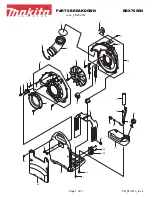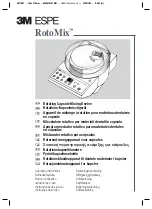
System Installation
14
Wall Mount Installation
Four mounting holes are provided on the rear panel of the power supply and provide for easy
mounting options.The power supply can be mounted to a wall or other smooth, supported,
vertical surface.
Step 1:
Each non-vented edge of the power supply offers conduit knock outs. Knock out the
required holes based on your installation wire plan.
Step 2:
Using a Phillips head screw driver, remove the two screws that secure the cover to the
power supply tray. Set screws aside for later re-installation. The cover is grounded by a
tether to the power supply enclosure.
Step 3:
Align the power supply in its desired installation location and mark, then pre-drill the
four mounting holes.
Step 4:
Install wall anchors (as needed) and the mounting hardware. Leave approximately 3/4”
(19mm) of the mounting hardware exposed to mount the power supply.
Step 5:
Install the power supply to the mounting hardware and tighten the hardware for a
secure fit.
Rack Mounting
The BluesSystem 6 zone power supply can be ordered with rack mounted brackets for
installation into a standard 19" equipment rack.
Terminate Power Supply Wiring
Mains Input Power for Wall Mounted Units
Step 1:
Make sure power is off at the main breaker.
Step 2:
Loosen the three screw terminals for ground, neutral, and line connections.
Step 3:
Strip each wire
5/16” (7.9mm).
Step 4:
Terminate the incoming ground wire (typically green/yellow) into the GROUND terminal
and tighten the screw firmly onto the wire.
Step 5:
Terminate the neutral wire (typically white) into the NEUTRAL (N)
terminal and tighten
the screw firmly onto the wire.
Step 6:
Terminate the line (hot) wire (typically black) into the HOT (L) terminal and tighten the
screw firmly onto the wire.
WARNING:
RISK OF DEATH BY ELECTRIC SHOCK! Failure to disconnect all power
to the system before installation, maintenance, cleaning or any other
system modification, could result in serious injury or death.
De-energize the main feed to BluesSystem and follow appropriate
Lockout/Tagout procedures as described in NFPA Standard 70E. It is
important to note that electrical equipment such as relay panels, can
present an arc flash safety hazard if improperly serviced. This is due
to available large short circuit currents on the feeders of the
equipment. Any work on energized equipment must comply with
OSHA Electrical Safe Working Practices.












































